已传文件:photo/1631586161.png
North Konami can provide Nb₂CTₓ nanoframes (customizable)
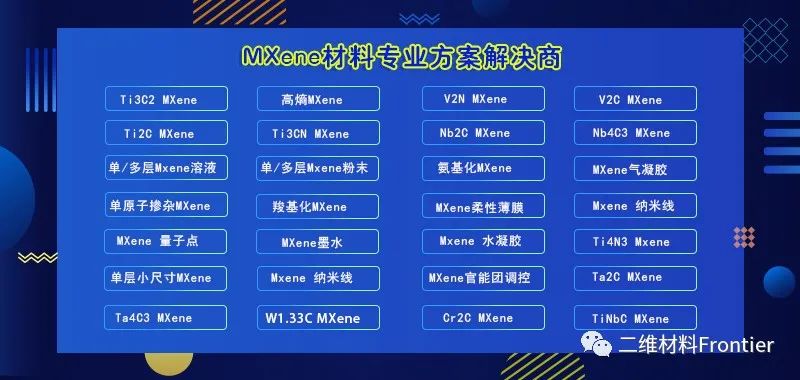
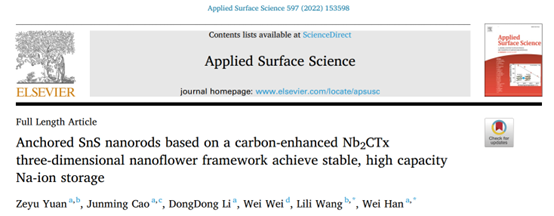
Research abstract
Due to the recent increase in the use of mobile electronic devices and electric vehicles, the development of electrochemical energy storage devices with high energy density has received great attention. Lithium-ion batteries have extremely high energy density and long-term performance, and are currently the most widely used energy storage devices. However, due to the scarcity and uneven distribution of lithium metal reserves, it is necessary to develop a new generation of batteries made of other materials. As a new generation of renewable energy storage devices, sodium-ion batteries have advantages in sodium storage and price compared to lithium-ion batteries. Sn-based sulfide materials have received extensive attention from researchers due to their extremely high theoretical reversible specific capacity for sodium ions (847 mAh g-1). However, Sn-based materials suffer from large volume changes, which will destroy the nanostructure of the electrodes, thereby affecting the stability of the battery. The research team of researcher Wang Lili from the Institute of Semiconductors, Chinese Academy of Sciences published a research paper titled: Anchored SnS nanorods based on a carbon-enhanced Nb2CTx three-dimensional nanoflower framework achieve stable, high capacity Na-ion storag in the internationally renowned journal Applied Surface Science. In this paper, SnS nanorods can be anchored on Nb2CTx nanosheets by using the reductive properties of Nb2CTx itself, and it has excellent sodium ion storage performance. The SnS/Nb2CTx electrode still has a specific capacity of 384 mAh g-1 after 100 cycles at a current density of 0.1 A g-1, and still has a capacity retention rate of 73% at a current density of 0.1-1 A g-1.
Graphical guide
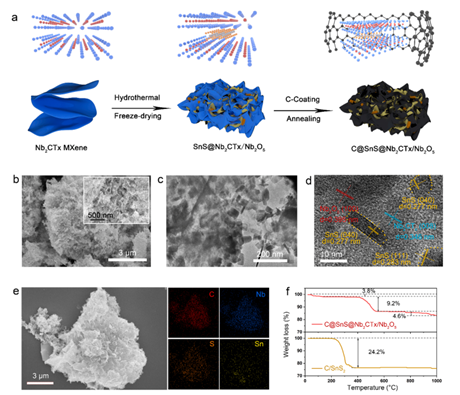
Figure 1. Synthesis flow chart of C@SnS@Nb2CTx/Nb2O5 and SEM, EDS, and TG tests.
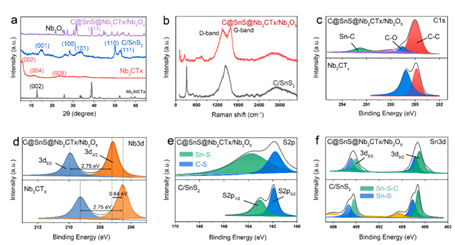
Figure 2. XRD and XPS characterization of C@SnS@Nb2CTx/Nb2O5.
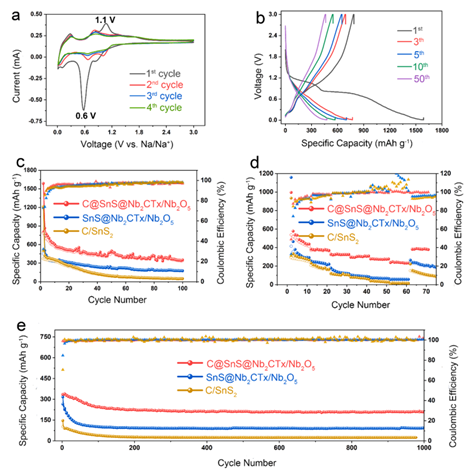
Figure 3. Electrochemical performance test of C@SnS@Nb2CTx/Nb2O5 sodium-ion half-cell.
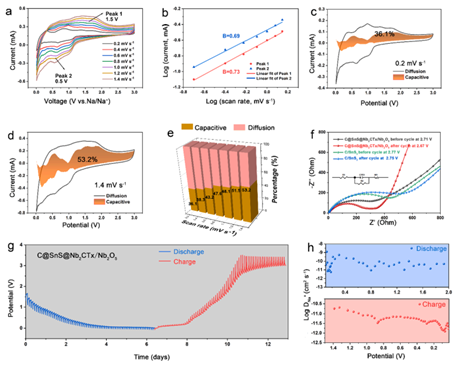
Figure 4. Kinetic analysis of C@SnS@Nb2CTx/Nb2O5 sodium-ion half-cell.
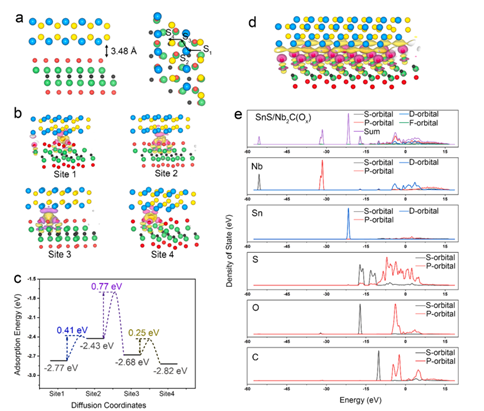
Figure 5. SnS/Nb2Cox electronic properties, Na ion adsorption sites and diffusion on SnS/Nb2COx surface.
Summarize
In conclusion, we have designed a method for the preparation of SnS by hydrothermal reduction with highly conductive Nb2CTx as the backbone. Therefore, we successfully synthesized a three-dimensional nanoflower-shaped sodium storage anode material. Such SnS nanorods are grown in situ on the Nb2CTx conductive framework, which can achieve a strong synergistic effect and improve the burying and extraction efficiency of SnS for sodium. In addition, the addition of the C layer can greatly alleviate the structural damage and material shedding caused by the volume expansion of Na-Sn alloys.
Literature link
https://doi.org/10.1016/j.apsusc.2022.153598
For the original text, please click the lower left corner of the tweet to read the original text









